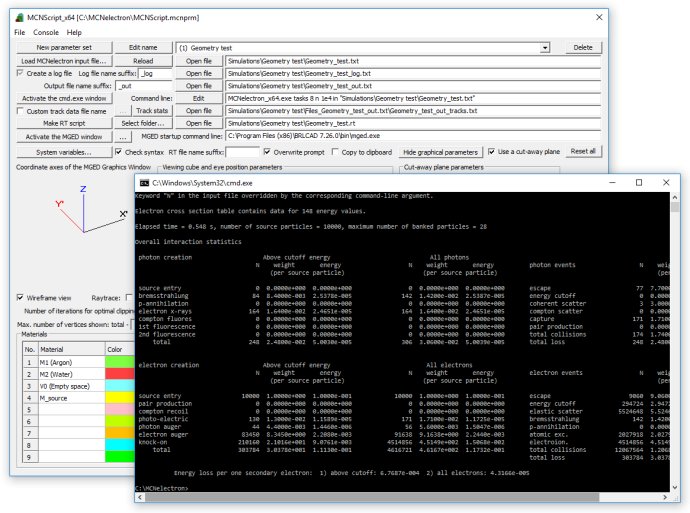MCNelectron is an open-source Monte Carlo code for modeling electron-photon transport. MCNScript is an accompanying program for data organization. BRL-CAD is required for particle track visualization and geometry. Ideal for radiation therapy and radiobiology research.

One of the unique features of MCNelectron is its implementation of constructive solid geometry on regions bounded by planes, spheres, circular cylinders, and circular one-sheet cones. Additionally, there are two versions of MCNelectron available: the CPU-only version and the CUDA-supported version (MCNelectron_CUDA).
MCNelectron_CUDA, in particular, has the capability to perform hybrid computations that leverage both the central processing unit (CPU) and Nvidia graphics processing unit (GPU) in parallel. Furthermore, MCNelectron allows users to replace ENDF/B inner-shell impact ionization cross sections and differential cross sections of elastic scattering with more accurate datasets also used in the PENELOPE code system.
Overall, the results obtained using MCNelectron are typically within 3% of those obtained using MCNP6.1 in single-event mode, though the CPU-only version of MCNelectron is typically faster than MCNP6.1.1 by a factor of 2 under identical simulation conditions.
Finally, MCNScript is an open-source dialog-based "shell" program that facilitates running Monte Carlo simulations with MCNelectron, organizing input and output files, and creating graphics rendering scripts for visualization of the simulation geometry and particle tracks. The raytracing scripts generated by MCNScript can then be processed by MGED (Multi-Device Geometry Editor) to generate either raytraced or wireframe images from 3D models using the constructive solid geometry technique.
Version 1.2.6:
The main improvements in MCNelectron v1.2.6 are the following:
1. The capability of coordinate transformations has been added.
2. The capability of procedural generation of input directives has been added. This is achieved using MCNEcode - a scripting programming language.